More Changes Coming for Croatian Recycling Process, Plastic Bags
December the 5th, 2022 - There are some new rules coming to the Croatian recycling process, as well as a new ban on some of the thinnest plastic bags still available, which are typically used to carry fruit and vegetables before unfortunately often being unceremoniously discarded.
As Poslovni Dnevnik writes, since this year, the use of light plastic bags has been banned across Croatia because they can't be used more than once, while very light (usually transparent) plastic bags, which we most often use when buying fruit and vegetables, have remained in use. However, due to the excessive use of these bags, which after one-time use often end up being discarded in nature or on the streets, a fee for them will also be introduced in Croatia from next year.
"The price of these bags will be determined by the merchants themselves, and the purpose is to reduce their overall use. They now have the label ''use them sparingly'' on them in an attempt made to influence consumer habits. However, now the bags will have a label on them indicating their cost, so that customers know that they need to pay for them,'' said Sanja Radovic, head of the Sector for Sustainable Waste Management of the Ministry of Economy and Sustainable Development for HRT.
In addition to the above, a new Croatian recycling process is coming. The new regulation will change the labels printed on returnable items such as plastic bottles, which currently amounts to 50 lipa. As of next year, that price will be calculated in cents with Croatia's transition to the euro.
"The new regulation, which will enter into force next year, will then determine the actual amount for the refund in euros (cents). The second thing is that this system is being extended to include other packaging, it still only regards bottles, however, instead of the limit we had now of two decilitres equal to or greater, the lower limit will no longer exist, and the upper limit will be three litres for such packaging for drinks,'' explained Sanja Radovic when discussing the new Croatian recycling rules for 2023.
Another piece of news is that milk, which is sold in tetrapacks, will also receive a label for return compensation/recycling.
"Croatian companies, as we've seen, mostly adapt to the current situation on the market by looking for solutions. What we can see is that they tend to incorporate a greater proportion of recycled materials into their final product(s). On the market at this moment in time, we have a situation where those prices have become higher than the basic raw material,'' said Ana Falak, the director of the Chemical Industry Association from the Croatian Employers' Association (HUP).
These new bans and new Croatian recycling rules will directly affect production cuts and jobs next year.
For more, keep up with our news section.
Zagreb, a City of 4 Seasons: the Colours of Autumn Buzzg
December 5, 2022 - The Croatian capital is a city of four seasons, with the Autumn Buzzg an underrated time of the year to visit.
One of the big differences between living on a Dalmatian island and the city of Zagreb - at least in my experience - is the number of seasons. A little like the Jadrolinija ferry timetable, life in Dalmatia seems to be just two these days - summer and winter - and largely tied to the season. Half the year open and busy, the rest of the year quiet and mostly closed.
One of the many things I have come to love about life in Zagreb is a return to a world of four distinct seasons. The cold of winter, lit up of course by the excellent Advent in Zagreb, soon gives way to Spring, as the trees and people come out in bloom as the weather warms up. And then there is Summer, which is a season I have come to appreciate greatly in Zagreb over the last two years. The city is a lot emptier as many head to the coast, leaving a much more pleasant and less crowded city for those who remain to enjoy.

(Photo credit I. Vinkovic)
As summer ends, coastal holidaymakers return, and the city once more gets down to business. but there is a subtle change of mood as we head into Autumn. The city is livelier than in those summer months, the temperatures are more pleasant, and the cultural and social life is excellent. Cafes are once more brimming with those doing business, relaxing or simply people-watching. But for me, the highlight of the autumn season in Zagreb are the colours.
Although I have travelled widely in my 53 years, I don't think I have found a more walkable or greener city anywhere than Zagreb. Its central part is very flat and one can easily walk from A to B in most cases, taking in some of the many parks, squares and tree-lined streets along the way. A green city in the summer perhaps, but a golden one in autumn, as the leaves fall from this tree-infested city to add a different layer of colour which is illuminated in the frequent sunshine.
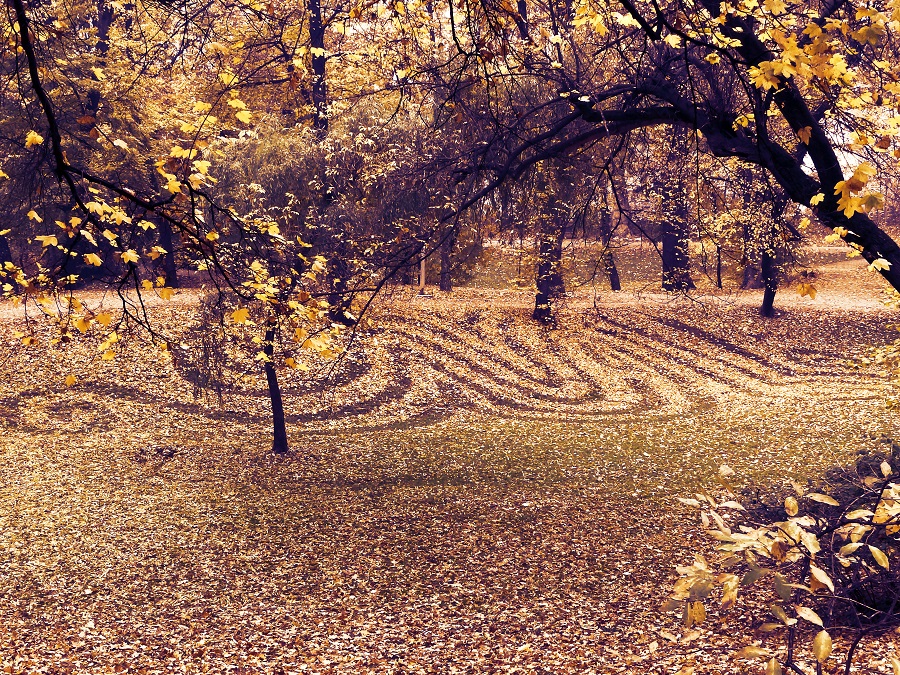
(Photo credit Boska i Kreso)
Zagreb's walkability is one of its most underrated attractions. From the famous Lenucci Horseshoe, a green stroll through the green squares and botanical gardens of central Zagreb, to the lakeside charms of Jarun and Bundek, and majestic parks such as Maksimir, this is a city to be explored and enjoyed on foot, stopping off regularly for a relaxing coffee or streetside portion of hot roasted chestnuts.
Feeling a little more energetic and adventurous? The mountains are calling, and hiking to the fortress of Medvednica and Sljeme mountain brings plenty of rewards, not least the spectacular views of the city below? Not feeling like hiking both ways? Take advantage of the new cable car which connects to Sljeme from the city.
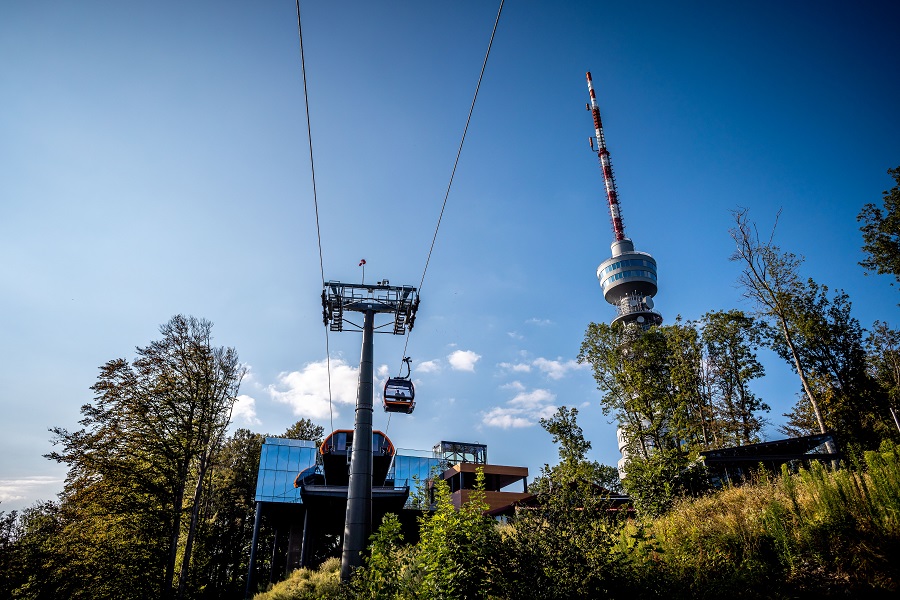
(Photo credit J. Duval)
For those looking to be a little more active, Zagreb is a jogging paradise, be it running along the Sava or exploring the beauty of its many parks. It is also a popular biking destination with its own biking trails, which will take the more adventurous out of the city into the hills. The excellent Around Zagreb website has a wealth of information on what can be visited around and beyond the city limits. And if you want to go truly native, head into the forests and start foraging - for this is mushroom season. Or perhaps a round of golf on Zagreb's very own 27-hole course.
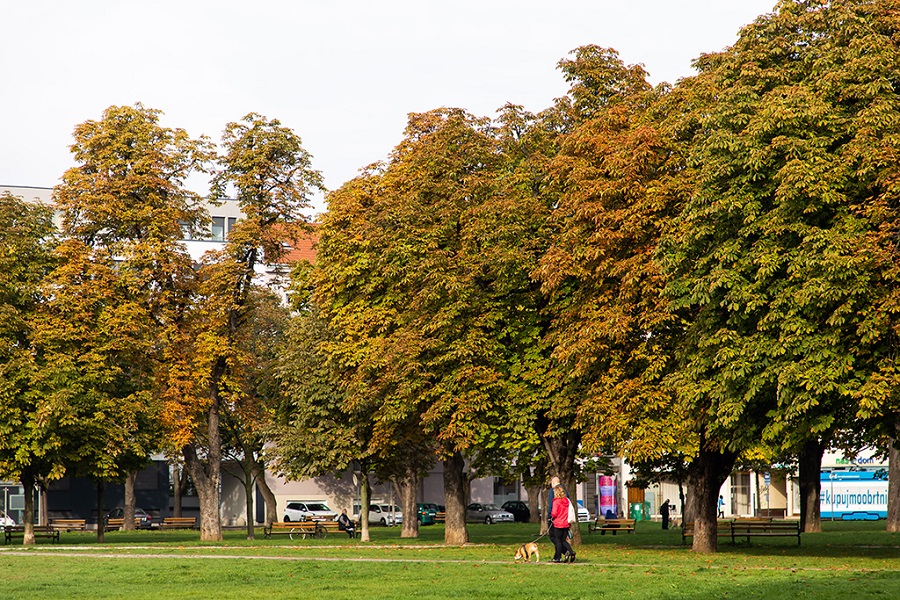
(Photo credit Lice Grada)
One of the more unusual claims to fame that Zagreb has is that it is a capital city with officially its own wine road, albeit a small one. The grapes of the harvest are in, and young wines are available to taste as an additional bonus to local wineries - a short trip out to the fabulous wine regions of Plesivica and Sveta Ivana Zelina will provide even more enjoyment.
For me, one of the strongest attractions of the autumn months in the city has been the concerted effort to promote this season as one of art and culture, and there have been numerous festivals which have brought the city's art and cultural offer to life. It is said that Zagreb has the most museums per square kilometre in the world, and it is certainly true that there is an outstanding selection.
Zagreb - my home for the last 18 months, and a city which moves with the seasons. And Autumn is by far the most underrated of these. Learn more about the options of Autumn Buzzg here.

(Photo credit - Zagreb Tourist Board)
A Brief History Of The Extinct Istrian-Albanian Language
December the 5th, 2022 - Ever heard of Gheg (or sometimes Geg) Albanian? It's one of the two main varieties of the Albanian language, the other being Tosk. Spoken in the Northern and Central parts of Albania, as well as in Kosovo, parts of Montenegro, Macedonia and Serbia, it has over three million native speakers. What does that have to do with Istria, you may ask? Let's get to know the now extinct Istrian-Albanian language a little better.
We've looked into the three main dialects which make up modern standard Croatian as we know it today, Shtokavian, Kajkavian (and Northwestern Kajkavian) and Chakavian. We've delved into dialects and subdialects such as Ragusan (the Dubrovnik subdialect), old Dalmatian, and some very sparsely spoken languages such as Istriot, Zaratin, Istro-Romanian and Istro-Venetian. Istrian-Albanian is now unfortunately entirely extinct, and there isn't that much known about it.
First of all, I should explain that the Istrian-Albanian language ''died'' in the nineteenth century, having arrived on the Istrian peninsula with the ethnic Albanians who moved there between the thirteenth and the seventeenth centuries. The Albanians who spoke this Northern Gheg form of Albanian were primarily settled there by Venice, which had an enormous amount of power at the time and of course then ruled over Istria, in an attempt to combat the increasing issue of depopulation of the wider area.
Of course, other ethnicities and nationalities also moved (or were moved) there by the then mighty Republic of Venice, and they also brought their various languages and dialects with them. This is part of Istria's very long and freckled history which makes it so diverse and rich. If any part of Croatia can be (and has more or less always been) considered to be multicultural, then it is the Istrian peninsula. The sheer amount of ethnicities present there is a testimony to the history of that part of the country.
The various languages and dialects spoken by the settlers of that time eventually saw the evolution of the Istrian-Albanian language, with the only known surviving text written entirely in Istrian-Albanian having been written by the Italian priest, inventor and historian Pietro Stancovich/Petar Matija Stankovic (1771-1852) in the 1830s.
Most sources claim that it was spoken in the very small settlement of Katun (close to Porec) until the nineteenth century, especially given the fact that the very name ''Katun'' draws its origins from Albanian, but there is very little known or officially recorded other than that. The reason for that could be similar to what has been observed with the Istro-Romanian language, in that many of its speakers were peasants who had little to no access to education, leading to the language simply being left to the often cruel hands of time. That said, we do know that the ''original'' version of the Istrian-Albanian languages was spoken in the wider Bar region in neighbouring Montenegro, as well as in and around Skadar in Albania.
Little is left in the modern day in regard to the extinct Istrian-Albanian language, as preservation attempts were never really a motive for anyone, which thankfully isn't the case for languages like Istro-Romanian, with both the Croatian and the Romanian governments attempting to keep it alive.
For more on the Croatian language, as well as the many dialects and subdialects spoken across the country, make sure to keep up with our dedicated lifestyle section.
Could Croatian Companies Solve Energy Problems of Nations Like Moldova?
December the 5th, 2022 - Moldova recently spent two hours without electricity owing to the horrendous actions of the Russians in Ukraine. Could Croatian companies easily solve such issues?
As Poslovni Dnevnik/Jerko Zlatar writes, Croatia is very much focused on Ukraine's ongoing strife. We only need to look at the debate being had in the Croatian Parliament on the training of Ukrainians, the commendable attempts made by numerous sectors in this country to help with the integration of refugees, and the excellent work of the Ministry of Foreign and European Affairs at the Crimea Platform and political support for Ukraine. That said, the Republic of Croatia continues to employ a chronically lacking approach when it comes to proactivity with sending humanitarian aid abroad.
The current situation in Ukraine and recently in neighbouring Moldova illustrates the passivity and disorganisation of the process of sending aid, and the involvement of Croatian companies in that process turned out to be minimal and somewhat spontaneous. This has consequences for future exports.
Moldova is currently facing an energy crisis due to the fact that Gazprom has significantly reduced its gas supplies. To make matters worse, the lifeblood of Moldova's electricity supply from the EU is the 400 KV transmission line, which runs from Romania, through Ukraine and the separatist enclave of Transnistria.
Due to the overloading of the system in Odesa Oblast, as a result of Russian missile attacks on the Ukrainian electricity supply system, Moldova was left without electricity for two hours. According to Bloomberg last month, advisory and professional help was sent to by Lithuania and Poland, because the local Energocom employs only seventeen employees.
As for Croatian companies, which could quickly build a new transmission line with appropriate transformer stations, and whose institutes (including HEP) could help a lot in the procurement of electricity - there were no such moves to speak of. The agreement for the new transmission line was signed back in 2017, the value of the project stands at 270 million US dollars. It was also planned to be co-financed by the European Investment Bank with 80 million dollars.
Another example is France, which, in the wake of Russian attacks on Ukraine's energy infrastructure last week, sent 100 generators with a power of 50 and 100 KVA. In total, 500 generators have been sent to Ukraine through the EU Civil Protection Mechanism.
However, among the sevetneen EU member states that have sent aid to Ukraine's electric power system, Croatia isn't among them - which produces almost everything needed in this situation, such as transformers, generators and transmission lines, and whose electricity industry has experience in staying up and running during a war.
In an interview with the Ukrainian channel Freedom TV, the head of the regional military-civilian administration of the Luhansk region, Serhiy Hayday, said that the area primarily needs water purifiers and help with demining, areas in which Croatian companies also have something to offer.
Regarding demining, help from Croatian companies has already been offered, but in the Luhansk region, literally everything is lacking, from electricity to windows and building materials. Regarding private initiatives, DOK-ING has already demonstrated its innovative demining and firefighting robots to the President of the Verkhovna Rada of Ukraine, Ruslan Stefancuk, during a visit to the meeting of the Crimea Platform in Zagreb.
Above all, it is necessary to create the most effective framework for bringing together businesses and the Croatian Government, which would be able to respond in a timely manner to crisis situations across the world, and which could become one of the main promoters of Croatian exports.
The Ministry of Foreign and European Affairs and the Croatian Chamber of Commerce would have to be included in that body, as would other stakeholders like the Croatian Employers' Association, in order not to need to wait for EC decisions, but to react immediately and raise Croatia's reputation across the world and actively promote domestic production.
For more, make sure to check out our dedicated news section.
Human Rights Film Festival Starting at Tuskanac Cinema This Sunday
December 4, 2022 - The jubilee 20th edition of the Human Rights Film Festival will begin with the screening of the documentary film "The Super 8 Years" by Annie Ernaux, winner of the Nobel Prize for Literature, on Sunday at the Tuskanac Cinema in Zagreb.
As 24Sata writes, until next Sunday, 26 documentaries and feature films of recent original production will be shown, and a programme will be held on current human rights issues.
Annie Ernaux, in the opening film, which she co-directed with her son David Ernaux-Briot, as she does in her literary works, combines autobiography with a sociological view of contemporary events. The screening of that film will be followed by the world premiere of the experimental film "Refractions" by Vladislav Knežević and the Croatian feature film "Afterwater" by Dana Komljen.
The festival also features four documentaries by Mantas Kvedaravičius, the Lithuanian director who was killed by Russian soldiers in April of this year while filming in Mariupol, Ukraine - "Barzah," "Mariupolis," "Mariupolis 2", "Parthenon."
The documentary "Casa Susanna" by Sébastien Lifshitz tells about the house of the same name, which in the middle of the 20th century was a refuge for heterosexual men who dressed as women, the feature film "Sparta" by Ulrich Seidlai is about a pedophile who operates in the poorest parts of Romania, while the new film by Véréne Paravel and Lucien Castaing-Taylor's "De Humani Corporis Fabrica" was filmed in Paris hospitals.
Other films to be presented include "No Bears" by Jafar Panahi, who was sentenced to six years in prison by the Iranian authorities to prevent him from making films, the colonial thriller "A Tale of the Pacific" by Alberto Serra, "Eami" by Paraguayan director Paz Encin about the natives of the area with the most rate of deforestation and the documentary "Provincial Hospital" which was filmed in a Bulgarian hospital, the new films by Sergej Loznica "The Natural History of Destruction" and "The Kiev Trial".
Panels and lectures programme
The other part of the festival will discuss how to advocate for human rights and gain support, the mental health crisis in Croatia, safe housing, adoption in LGBTQI+ families in Croatia and Norway, along with the screening of the documentary film "All families are equal".
The Sakharov Academy deals with Ukraine, there will also be a Seminar for Precarious Times, with online lectures on creative and intellectual work, panels on climate change and migration, the challenges of Africans in Croatia, discussions with the films "Bigger than Trauma" by Vedrana Pribačić and "Taming the Garden " Salomé Jashi.
Films are shown in the Tuškanac and Kinoteka cinemas, the resr of the programme will be in Dokukin KIC, and the musical concert of the Kries group in the Močvara club. The organisers are Multimedia Institute/MaMa Zagreb and URK/Močvara, and admission to all programs except the music one is free.
For more, make sure to check out our dedicated Lifestyle section.
Dalić and Gvardiol ahead of World Cup Round of 16: "We Can't Underestimate Japan"
December 4, 2022 - Croatia national team coach Zlatko Dalić and superstar center-back Joško Gvardiol addressed the press ahead of the World Cup round of 16 match against Japan.
Croatia will play Japan at Al Janoub Stadium on Monday at 6 pm local time. There is a fantastic atmosphere within the Croatia national team. Apart from Borna Sosa, everyone else is fully prepared and focused on Japan.
Japan announced that they would enter the match like Samurai.
"We respect our opponent, the winner who defeated two world champions, Spain and Germany. In their defeats, they showed character and quality. We must not underestimate anyone. We know they will go into the match like Samurai; we won't do any worse, either. We know what kind of opponent we are playing against and our mentality. We have to position ourselves in the same way. We will play with maximum respect for the opponent, so the pitch will show who is better," Dalić emphasized at the beginning of the press conference.
He also spoke about Borno Sosa, who was not at yesterday's press conference due to exhaustion.
"We have the last training, so we will see the situation. If Borna is not ready, we will not risk anything. We will look for a replacement. We are still waiting. We need players at full strength for tomorrow because that game will demand it. Regardless of choice, we are ready and will give our best. Whoever we have given our trust to has justified it so far," he adds.
Joško Gvardiol said he was honored to join the coach at this press conference.
"I am honored that the coach took me to today's conference. I hope it won't be the last time I announce the match," he said.
"I know the Japanese players very well. They present many problems, and when they are with the national team, they are a team that fights for the whole 90 minutes and will not give up until the end."
They looked back at the 2020 Euros and being knocked out by Spain.
"That was the situation then. Joško came from the young national team, and we trusted him. You can't become a player if you don't have support. And then we endured some things and matured. Of course, there will be more mistakes and bad moments, but to become a real player, you must go through it all and play matches. I think that Joško justified our trust," said Dalić.
Gvardiol agreed.
"Everyone makes mistakes, and I made a mistake then. There were a lot of circumstances. Debut matches and jitters, but that's behind us now. I am open to new challenges."
They say the third time is a charm. Can Croatia win the World Cup?
"No one is happier for it to be than us. We will try; we have a chance. We believe in our dream. I'm always an optimist, but this competition is of high quality. We provide excellent results at World Cups. We are among the last 16 with the smallest population and the smallest country. We are a small country, but with big dreams. The goal is to go as far as possible. When Croatia plays and produces good results, our entire nation is happy, and I want it to last even longer," Dalić said.
"The first step is in front of us, and when we pass it, we will look further. Croatia is successful, and the results are in the rank of a world miracle. This is our quality and our success. We continuously play well in big competitions. We have become a football superpower that everyone respects and must respect. A difficult match awaits us against an opponent who wants to prove itself. It will be difficult for us. However, we are happy to be here at the World Cup, that was our goal, and now the goal is to make the nation happy."
And finally - is this the last national team competition for Luka Modrić?
"Whatever I say about Luka, it's too little. May God give him health, and may he last longer. I am sure that this is not his last competition for Croatia. His physique, training, work, and professionalism prove us right. He is a very important player. I don't want to talk about individuals. After Belgium, there was talk about Gvardiol. We are a team. That's the only way we can get a result. Not Luka or Gvardiol. The individual will jump out if the team is good. Luka is our captain and leader, let him continue," said Dalić.
Source: HRT
To follow the latest sports news in Croatia, follow TCN’s dedicated page.
CNN: There is an Illegal Chinese Police Station in Zagreb
December 4, 2022 - Chinese police officers were seen on a joint patrol with their Croatian colleagues on the streets of the capital Zagreb in July. According to CNN, Chinese police stations were set up across Europe, including Croatia.
As Poslovni / CNN reported, Beijing has set up more than 100 so-called overseas police stations worldwide, including in Croatia, to monitor, harass, and in some cases, return Chinese nationals living in exile.
At the same time, writes CNN, the Chinese are using bilateral security agreements concluded with countries in Europe and Africa to gain a broad international presence.
Madrid-based human rights group Safeguard Defenders has found evidence that China operates 48 additional police stations abroad since the group first revealed the existence of 54 such stations in September.
A new report called "Patrol and Persuade" focuses on the scale of the network and examines the role that joint police initiatives between China and several European countries, including Italy, Croatia, Serbia, and Romania, have played in the expansion of China's overseas outposts.
Among the new claims made by the group is that a Chinese national was forced to return home by operatives working undercover at a Chinese overseas police station in the suburbs of Paris, recruited specifically for the purpose, in addition to earlier revelations that two other Chinese were forcibly returned from Europe – one in Serbia, the other in Spain.
China struck agreements on joint police patrols with Croatia and Serbia between 2018 and 2019 as part of the nation's growing strategic influence as outlined in China's foreign policy priorities, CNN reports.
Chinese police officers were seen on a joint patrol with their Croatian colleagues on the streets of the capital Zagreb in July of this year.
A Zagreb police official interviewed by the Chinese news agency Xinhua said that patrols are crucial for "protection and attracting foreign tourists."
A 2019 Reuters report said Chinese police officers joined Serbian police on patrol in Belgrade to help deal with the influx of Chinese tourists.
One Serbian official said the Chinese had no authority to make the arrests.
Safeguard Defenders, which searches publicly available official Chinese documents for evidence of human rights abuses, said it had identified four different police jurisdictions of China's Ministry of Public Security active in at least 53 countries, spanning all four corners of the world, allegedly to help Chinese expatriates with their needs abroad.
The NGO claims Italy hosted 11 Chinese police stations, including in Venice and Prato, near Florence.
Beijing has denied having an undeclared police force outside its territory, and its Foreign Ministry told CNN in November: “We hope the relevant parties will stop exaggerating to create tensions. Using this as an excuse to smear China is unacceptable.”
China has argued that the facilities are administrative centers set up to help Chinese expatriates with tasks such as renewing their driver's licenses.
China also said the offices are a response to the covid-19 pandemic, which has left many citizens in other countries unable to renew their identity documents.
The Chinese Ministry of Foreign Affairs announced that the overseas stations are staffed by volunteers, but in the meantime, it has emerged that in some cases, they are people employed on multi-year contracts.
According to CNN, unreported consular activities outside of a country's official diplomatic missions are highly unusual and illegal unless the host country has given its express consent.
The suggestion that there is widespread repression of Chinese citizens in foreign countries comes at a crucial time for a nation grappling with its own unrest at home, amid fatigue from the country's restrictive Covid-19 policies as leader Xi Jinping's third term in power begins, CNN reports.
For more, make sure to check out our dedicated News section.
An Astrological Guide to Your Next Bottle of Croatian Wine
There is something inexplicably appealing about astrology, especially at this time of the year. We ask the stars how rich, loved, and healthy we will be (or not) in the coming one. But what if you let your sign choose the next bottle of Croatian wine? Fun is guaranteed!
Aries (March 21 - April 20)

Bold, passionate, stubborn. Your fire nature gives you no time for ordinary things in life. Definitely go for a Babič! Autochthone from Šibenik and Primošten area, this red wine variety will seduce you with its velvety tannins, black fruit aromas and Mediterranean herbal notes. A powerful and lively red that never disappoints. Try it with matured cheeses, Dalmatian prosciutto, pašticada (traditional Dalmatian braised beef dish) or BBQ red meat.
Taurus (April 21 - May 20)
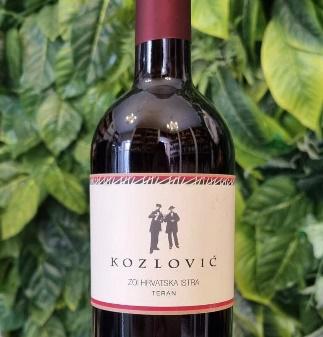
Down to earth, genuine, hedonistic. You simply love your comfort zone. Indulge your senses with a Teran! This autochthone Istrian red wine variety will pamper your palate with its red fruit aromas and peppery notes. Flavour is rich, tannins smooth, soft and round. Pair it with some Istrian prosciutto, boškarin dishes (Istrian cattle breed), truffle pasta or simply with a piece of dark chocolate.
Gemini (May 21 - June 21)
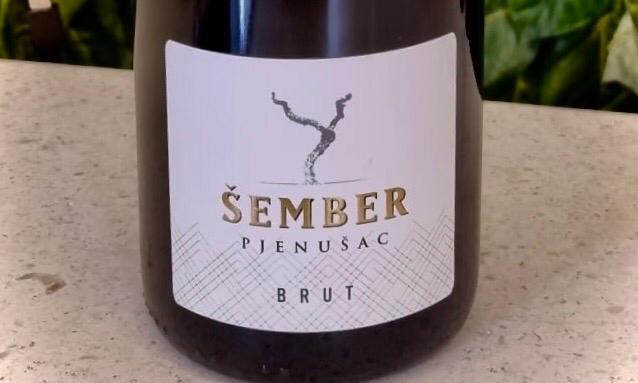
Outgoing, talkative, the social butterfly of the zodiac. Your next bottle must be sparkling, as your personality. Best Croatian sparkling wines come from the Plešivica area. Also known as ‘’Croatian Champagne Region’’, this area is producing excellent sparkling wines by using the traditional method. The wines from the area have a complex bouquet, pleasant acidity and aromas of white stone fruit, bread crust and butter. Enjoy your bubbles with creamy cheeses, almonds, fish carpaccio or oysters.
Cancer (June 22 - July 22)

Although people often perceive you as cold and distant, your thick external shells hides a gentle and emotional soul. Your ‘’winemate’’ is definitely a Grk! This rare white grape variety from Lumbarda on Korčula island is on its way to glory. Dry, full-bodied, mineral, with primary ripe fruit aromas, such as apples and pears, Mediterranean herbal notes and a characteristic final bitterness. Pairs well with tuna tartare, white fish, mature cheeses and asparagus dishes.
Leo (July 23 - August 23)
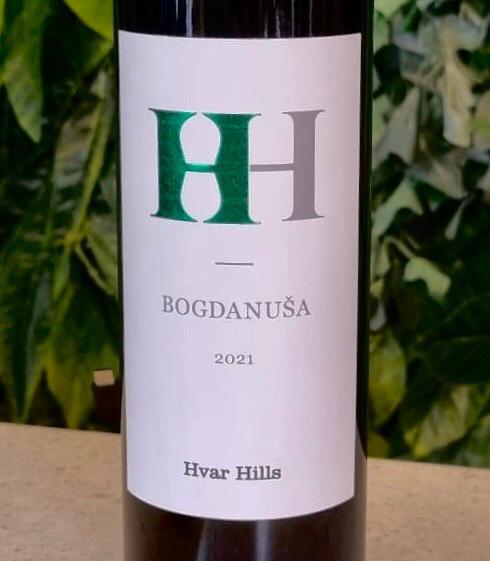
Vivacious, creative, dramatic. For your majesty ‘’the king of the jungle’’, I recommend nothing less than a Bogdanuša. An ancient autochthone white grape variety from Hvar island, which literally means God-given (sounds appealing, right?). A refreshing dry white wine with low acidity and primary floral aromas. Enjoy it alone, paired with some white meat or grilled white fish.
Virgo (August 24 - September 22)
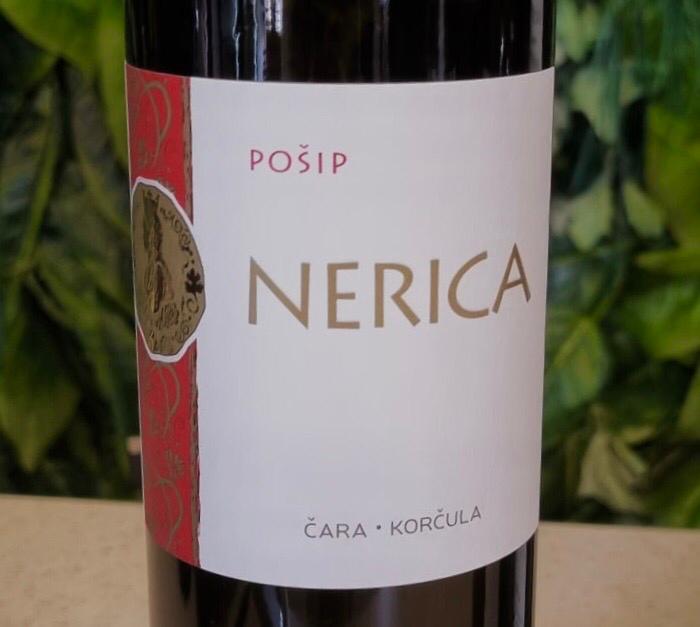
Logical, practical, a perfectionist. Since you don’t have time to waste, go straight on to a Pošip: one of the most loved white wines by locals and foreigners alike. Native to the island of Korčula, today this grape variety is widespread in Central and Southern Dalmatia. Dry, full-bodied, exceptionally mineral, dominated by apricot, peach and citrus aromas. Best served with fish and shells, but also pairs well with Dalmatian prosciutto and Pag island cheese.
Libra (September 23 - October 22)
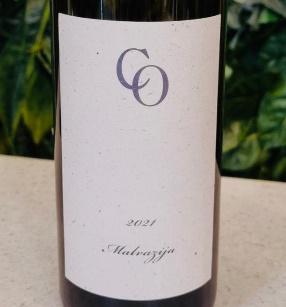
Charming, balanced, harmonious. However, making a decision is always hard for you. Pick an elegant and timeless Istrian Malvazija and you won’t be disappointed. The queen of Istrian whites will enchant you with its apricot, acacia and almonds aromas. Fruity, fresh, always harmonious thanks to its perfectly balanced acidities. Try it with fish, white meat or your favourite pasta dish.
Scorpio (October 23 - November 22)
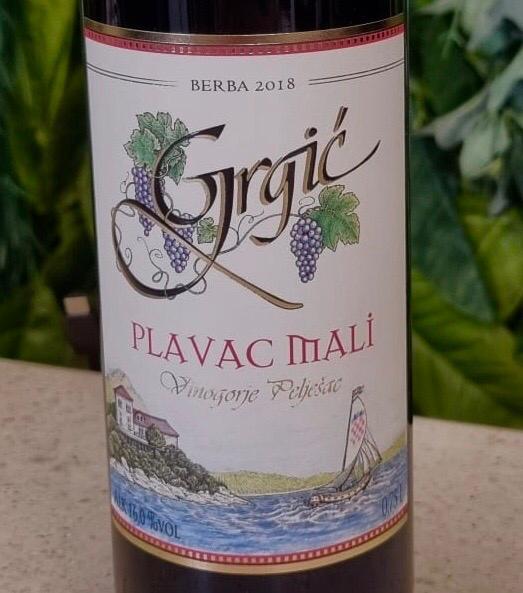
A complex and mysterious personality: loyal, compassionate, but can attack when least expected. You are definitely a Plavac Mali! Its name translates as the ‘’Little Blue’’ and it is the king of Dalmatian red wine varieties. This is a ‘’serious’’ red wine, high in alcohol and tannin, with primary black fruit aromas and spicy notes. Try it with a Dalmatian charcuterie board, red meat dishes or simply with a nice BBQ steak.
Sagittarius (November 23 - December 21)
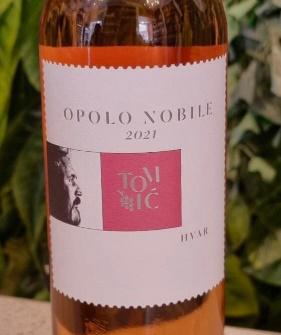
Independent, adventurous, curious. Feed and celebrate your curiosity with a bottle of Opolo! Opolo is the traditional Dalmatian name for rosé wines, which are usually made from Plavac Mali or Babić grape varieties. Dalmatian rosé are dry, refreshing, mildly acid, with primary raspberry and strawberry aromas. Enjoy it with shrimps, chicken dishes, your favourite pasta and even pizza!
Capricorn (December 22 - January 20)

Ambitious, hardworking, determined. You have a ‘’the best or nothing’’ mindset. So for you I suggest a bottle of Dingač: the best of Plavac Mali variety, coming from the homonym protected winegrowing area on the Pelješac peninsula. A Dingač, often aged in barrique barrels, will satisfy the Capricorn’s taste buds with its ripe black fruit aromas and spicy, smoky notes. Try it with game dishes, such as wild boar, or with slow-cooked beef in thick and rich sauces.
Aquarius (January 21 - February 19)
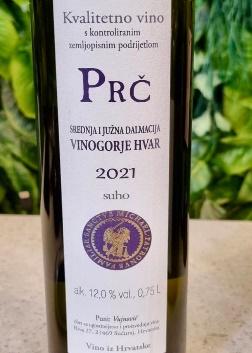
Rebellious, altruistic, nature-lover. Absolutely go for a Prč! This rare white grape variety from Sućuraj, on Hvar island, is according to locals a powerful natural aphrodisiac. ‘’Gods call it nectar, people Prč (…) And it raises men's strength to the clouds’’ Danko Angjelinović (1893–1963). Dry, crispy, with primary grapey muscat aromas and citrus notes. Pairs perfectly with white meat, fish and any type of seafood.
Pisces (February 20 - March 20)
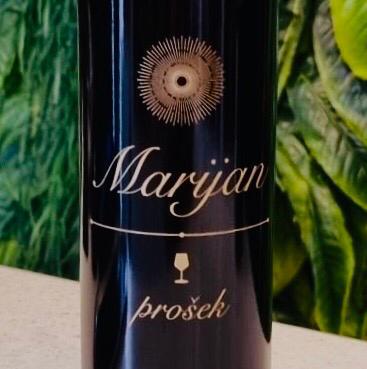
You are a sensitive, emotional and caring soul. Celebrate your senses with some Prošek: the Dalmatian traditional dessert wine. Made through the passito method with different local grape varieties, this wine has primary dry fruit, raisins and jam aromas. Irresistibly sweet, just as you are. Serve it with some traditional Croatian pastries or dried figs. P.S. Never confuse Prošek with Prosecco, but that’s another story.
Want to learn more about Croatian wine? Follow the dedicated TCN section.
Religion of the Old Slavs
December 4, 2022 - A journey back in time with Marko Loncar to examine the religion of the Old Slavs.
Just as it happened in other corners of the world where people of Egypt, Sumer or even Nordic people created their own system of beliefs and shaped them into a universal cosmogony and theogony, thus trying to give an explanation to the world and life that was, in those early stages of human development, just revealing to them, old Slavic tribes followed in those same footsteps and provided a unique explication to the fundamental existential questions consequently creating a system of their own device. Though unparalleled in a way, the Slavic set of beliefs bears a close resemblance to all other mythologies of the ancient world, only to prove that these cultures influenced one another and that the same questions astounded them, and the desire to unravel these from the realm of the unknown is something they all had in common.
Slavs shaped their spiritual life around an animistic-polytheistic system of beliefs with personified forces of nature and integrated ancestral cult (Vukdelić 2021, 333). Religious beliefs of the old Slavs were deeply rooted in their common ancestral origin and even further more in the past in their common proto-Indo-European origin (Vukdelić 2021, 334). A close resemblance between swastika and kolovrat - a symbol closely associated with Svarog, the supreme deity in Slavic religion, symbolising a never-ending cycle of birth and dying - proves the connection and possibly direct influence of the proto-Indo-European cults on Slavic religion. Both symbols, in their spinning form, also represent the Sun.
Though the beliefs of old Slavic people could be colloquially understood as dualistic, strictly speaking, they were not. The dualistic concept implies that gods were strictly divided into good and bad, but with Slavs things are somewhat different. All deities in the pantheon could have both good and bad attributes and powers that they could resort to and exert onto the people that were subjected to them. This conception comes from their understanding of forces of nature and close association and personification of those forces with the gods they were worshipping.
SVAROG
Svarog was the supreme deity in some tribes of the ancient Slavic people. He was known as the deity of the sky and the Sun. Its cult was worshipped in the ancestral land of the Slavs, and it is considered that it originated from the old Hindu deities Svarga or Varuna, since the cult of the Sun was widely spread with the people in the East (Ledić 1969, 27).
Though in most Slavic tribes, Svarog was the supreme deity, the creator of Heaven and Earth, in some tribes in his place stood Perun, a deity that shared similar attributes, and was placed on top of the pantheon.
In their imagination Svarog was the most powerful deity and a forefather of all other gods (Ledić 1969, 29). In his honour sanctuaries were built and statues erected where sacrifices were offered to him. Other notable attributes of this supreme deity were that he was god of the blacksmith craft, and his offspring were worshipped as sun gods and flame and single deities (Ledić 1969, 28). He was considered to have supreme judicial authority. He had the power to distinguish right from wrong, and accordingly, in the footholds of his statues that stood in the sanctuaries made in his honour old Slavs held their court trials and made verdicts of justice invoking his name (Ledić 1969, 37).
Subsequently, myths were derived from the supreme deity and transferred to his offspring - minor deities. Svantevid was another personification of the Sun; Perun – God of thunder and lightning; Daždbog, also known as Perun in some tribes – God of rain; Zora – Goddess of dawn; Danica that represented Venus; and God of the young Sun – Svarožić (Ledić 1969, 37).
According to their beliefs, Svarog personified the sky and gave birth to two children – sun and fire. The Sun was considered to live in the east, where from a golden palace, it emerged every morning in its carriage pulled by white fire-breathing horses (Ledić 1969, 37).
PERUN
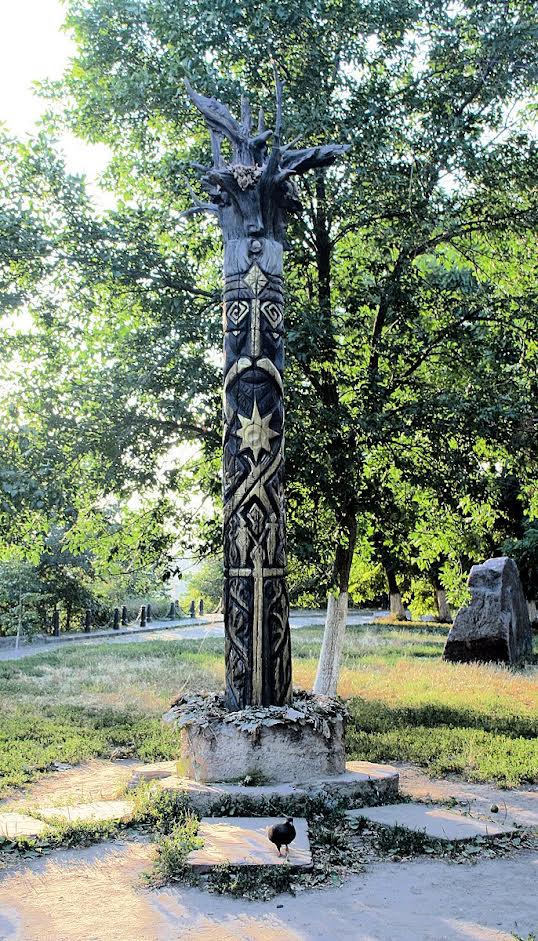
(Photo credit -Ukrainian ridnovir)
The myth of the thunder god dates deep into the history of the Slavic tribes. Ancestors believed that Perun abides high in the clouds from where he rules and governs life on Earth (Ledić 1969, 49).
He was credited with presenting fire and light to the people, and was anthropomorphised as a man holding a hammer or a bundle of lightning bolts in his hand. According to the lore, he presented the gift of fire to the people by setting chunks of tinder on fire and sending them to Earth (Ledić 1969, 49).
As a very important deity, second only to Svarog, he had many powers that were attributed to him, all of which people considered important in their life that was so strongly intertwined with nature. They believed that by controlling thunder and lightning, he was sending rain, vital for successful harvesting and the prosperity of the tribes (Ledić 1969, 50).
Protecting people from forces of dark and evil was also something that he was credited with, just as he was the protector of fishermen and tamer of sea storms, but he was also a patron of homes. His name was invoked upon building new houses. To point out how important this deity was, the fourth day in the week was named after him – “Perenden” – just as Germanic and Nordic tribes did to honour their counterparts Donner and Thor (Ledić 1969, 50).
As a lover of peace and justice, Perun was portrayed as a deity that felt joy when seeing fields that abound in golden grain and fruitful harvests, and was invoked by the ancestors when negotiation took place between warring tribes and peace deals were brokered (Ledić 1969, 52).
Many important landmarks and sites were named after him, like hilltops, mountains and cities. Some tribes, notably those abiding in the region of southern and western Balkan, ranked him as the supreme deity surpassing even Svarog. It is important to emphasize that there is no fixed pantheon of Slavic deities, and that beliefs differ from one tribe to another just as the attributes of gods often time overlap.
VOLOS
Another notable deity in the spiritual life of old Slavs was Volos, deity of shepherds, herds and rearers. Slavs, as an agricultural and stock-herding people, embraced the cult of worshipping Volos. They considered him to be the deity of farmers and fertility and a protector of shepherds. Evidence of the importance of Volos to the people was a shrine that stood in Kyiv, and was known as Kyiv Pantheon (Ledić 1969, 74). A shrine in which together with the statues of other Slavic gods a statue in Volos’ honour was erected. As it often times was in other cases, he also shared his attributes with other gods. His powers overlapped with those of Perun since he was believed to be the avenger of the broken pledge between the tribes, and also vows for peace were taken invoking Perun and Volos.
He was anthropomorphised in many ways, differing from one tribe to another. In the tales of the old, he was depicted as a blind old man. In some places, he was imagined to have two eyes, while somewhere else he was thought to be a one-eyed giant holding a lamb while an ox lied next to his feet (Ledić 1969, 75).
Volos was worshipped in shrines, but also on the hills and in the mountains and groves (Ledić 1969, 77). Slavs named the constellation Pleiades in his name, and to them it was known as the constellation Vlašić, Vlastovice, Vlastari or Lastari depending on the tribe (Ledić 1969, 78).
When Slavs migrated from their ancestral lands, they would often times name certain places, settlements or hilltops in honour of their gods. As proof of this, we have the city of Volin on the confluence of river Odra in the Baltic; the river Volga’s name was derived from Volos, then there is Volosko in Kvarner, Veles in Macedonia, etc.
As Christianisation took place, gods of the old were starting to be abandoned and their influence on people’s spiritual life slowly decayed. Attributes of the old gods were blended with new Christian saints with the aim of gradually overtaking a pivotal role in their spiritual life and substituting old pagan religion with a new, proclaimed one. Volos was most likely substituted with St. Blaž or Vlaho who was attributed with being the protector of livestock (Ledić 1969, 80).
VODAN
In every corner of the world from ancient times, evidence can be found of worshiping the cult of water. Just as it is with the Sun, Moon and thunder - all natural phenomena that occupied the attention and imagination of our ancestors - water, in its own right, holds a position very high in the pantheon of old pagan religions.
Every major river had its deity that, by belief, abided in it. Well-known are ancient gods of the sea – Poseidon and Triton in Greece; Neptune was admired in ancient Rome; the God of the river Nile was worshipped and even Ganges, Jumana and Sarasvati had its feminine deities; and to parallel them Savus, Dravus and Drinus were the deities that bore the name by the matching rivers (Ledić 1969, 87).
Old Slavs worshipped Vodan – the deity of seas and rivers. Vodin, Vodjan and Voden were all alternative names of the same deity that spanned throughout Slav territories. Vodan was worshipped as a protector of seamanship and the shipping trade. He was depicted as a long-haired bearded man holding a trident, just as his counterparts in Greece and Rome. Sacrifices were offered to him after a successful fishing venture and prayers said before indulging in seafaring or fishing trips. Slavs also believed that nymphs and fairies abided in waters, and just as it is in other religions, they were depicted as beautiful and helping maidens, but treacherous if insulted or hurt – all features that can be paralleled with characteristics of the sea (Ledić 1969, 89).
Vodan was the supreme deity of waters, but had a great number of offspring that were all deities of particular springs or rivers. They were known as Rusalke in the ancestral land of the Slavs, or simply fairies in their new homelands such as it is with Polish, Czech or Croat people, and were traditionally depicted as beautiful maidens with long unraveled hair who were on good terms with the people (Ledić 1969, 90). Fire and water were the main agents for spiritual purification. The effect was accomplished by ritual baths in rivers or by jumping over burning bonfires, a rite that found its way into tradition of the native people and was kept as a custom in some places till modern times. An interesting rite was held during late spring nights on the river banks when young men and maidens would rush to the rivers while fires were lit on hilltops and along the lowlands of the Dniester an Vizsla rivers. This custom served as a way for young women to meet their future life companions. This was known as “Meetings of the Rusalke” (Ledić 1969, 92).
In their ancestral lands, Slavs buried their dead near river banks and those places were regarded sacred. Such was the importance of water to them. This custom kept even in their new homeland. Numerous sites of burial places and necropolises along Sava, Drava, and Danube rivers bear witness to the continuity of this practice (Ledić 1969, 91).
SVAROŽIĆ
This deity is derived from the name of Svarog. He represents a young sun god. Originated with the tribe Veneta that abided in the Baltic, but was also worshipped in Russia as a god of the young sun and giver of gentle warmth and light (Ledić 1969, 108). According to their beliefs, he was born every year around Christmas time, symbolising a weakened sun that is about to rejuvenate and renew his strength. Metamorphosis of this deity are seen in other tribes in the form of Jutrobog, when the sun strengthens; or Daždbog in Croats, when rain falls as a blessing on the fields and crops; and in the summer, he is Vid or Svantevid, a god of harvest on the island Rugen in the Baltic sea, and when the crops are ready for harvesting he is Trebun in western and eastern Slavs (Ledić 1969, 108).
The deities mentioned above are the ones that were the most important and were worshipped the most in the mythical-religious life of the old Slavs, but the full scope of it poses a formidable challenge to envelop in a single paper. That being said, I would just like to mention a few others along with displaying what they were attributed with.
Radogost was a protector of hospitality, an attribute that is well-known to the Slavic people. Vida was a protector of marital harmony. She was the marital companion of Svarog. Slavic women prayed upon her for help and happiness in love and marriage. Vesna symbolised joyful spring and lushness, a cult similar to Germanic Ostari and Egyptian Osiris. Lada, a goddess of love, hot summer and harvest, was credited with being the commander of all fruitful urges in nature (Ledić 1969, 129-165).
As Christianity emerged as a new and prosperous religion that was about to suppress religions of the old, and Christianisation took place even as early as in the 3rd or 4th century, and the world was on a brink of a radical change as the might of the Roman empire was coming to an end, the spiritual life of the Slavic tribes was not left aside and bypassed by those changes, but was fully included in reshaping the future of the religious life in Europe.
During the process of Christianisation and after its so-called completion, Slavic people kept their old traditional magical-religious beliefs and practices parallel with their new religion. In essence, this was a tacit agreement between the Christian clergy and the people. A political concession was made by the clergy so as to avoid massive rejection of the new faith among the domicile inhabitants. The substitution of mythological gods with Christian saints that took over their attributes is in keeping with the agenda of slowly entering and consequently dominating the spiritual domain in their lives.
These two essentially different systems of beliefs in practical life and in spiritual rituals often collided with each other, but the contradiction between the two, nevertheless, posed no problem for the people to develop a certain syncretistic attempt to merge the two (Vukdelić 2021, 345). Such contradiction can be seen in perception of time. Slavs conceived time in myths as a cyclic image of ever-renewing in which forces of nature always restore its balance, contrary to Christianity with its linear perception of time and a world that has its beginning and moves towards its end (Vukdelić 2021, 342).
This attempt of syncretism proves not only that the process of human theological, cosmogonical and philosophical development has not yet come to an end but also, that, most likely it never will. Due to the nature of the subject matter, humanity will undoubtedly witness yet another series of both intentional or political-so to speak, and unintentional interferences into the corpus of the spiritual life and practices as a whole in the coming future.
Iz Man Interferes With Airplanes With Laser, Faces up to 5 Years in Prison
December 4, 2022 - The police officers from the Zadar Police Station have completed a criminal investigation of a 55-year-old Croatian citizen for a crime against public safety. This man from the island of Iz used a laser to interfere with airplanes flying over the island.
As Index writes, it is suspected that on November 30, 2022, around 8:20 p.m. in the Zadar area, he intentionally interfered with the flight of an airplane operated by a 35-year-old pilot using a laser, and with such a dangerous act seriously endangered the safety of the airplane flight and caused danger to people and property, announced PU Zadar.
He faces up to five years in prison.
After a criminal investigation, a criminal complaint was filed against a 55-year-old Croatian citizen at the competent state attorney's office in Zadar on suspicion of having committed the criminal offense of "endangering life and property by means of a generally dangerous act or means."
Yesterday he was taken to the custody unit of the Zadar Police Department. Pursuant to the provisions of Art. 215 of the Criminal Code of the Republic of Croatia, according to which a prison sentence of six months to five years is foreseen for the perpetrators of this criminal act.
As further reported by Index, last year, Govorčin did the same, admitting at the time that it was "self-defense" because the islanders constantly suffer from the shaking, noise, and terrible thunder of the planes that fly over the island.
"It was pure self-defense. Last time, because of the noise and the terrible thunder of the planes that flew over the place, almost everyone fell from the olive trees during harvest, and there were mostly elderly people living in the town. It's like that every day," he said then after having interfered with the flight of an airplane in the Zadar area with a laser on two occasions, once in June and once in September.
For more, make sure to check out our dedicated Lifestyle section.


